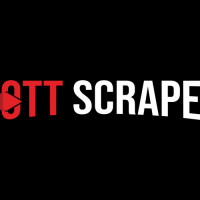Streaming app API scraping: A Comprehensive Guide

Strong 8k brings an ultra-HD IPTV experience to your living room and your pocket.
Streaming App API Scraping to Optimize Your Content Strategy-01
Data has become a cornerstone for decision-making and strategic planning in today's digital landscape. Streaming apps like Netflix , Hulu, and Disney+ are at the forefront of this revolution, providing vast amounts of data related to content, user preferences, and viewing patterns. For developers and data enthusiasts, streaming app API scraping offers an opportunity to gather this valuable data. This guide will walk you through the essentials of API scraping for streaming apps, covering everything from basic concepts to practical steps for getting started.
Understanding API Scraping
Understanding-API-Scraping
API scraping involves programmatically collecting data from an application's Application Programming Interface (API). APIs allow different software systems to communicate, providing structured access to various functionalities and data sets. For streaming apps, APIs can offer insights into content libraries, user interactions, recommendations, and more.
Unlike traditional web scraping, which involves extracting data from web pages, API scraping directly interacts with the API endpoints provided by the streaming services. This method is typically more efficient and reliable because it pulls data in a structured format, such as JSON or XML.
Why Scrape Streaming App APIs?
Why-Scrape-Streaming-App-APIs
API scraping for streaming apps can offer numerous benefits:
1. Content Analysis:Analyze trends in popular content, track changes in available titles, and study content performance over time.
2. User Insights:Understand viewing habits, preferences, and demographic information to tailor content recommendations.
3. Competitive Analysis:Compare content offerings and features across different streaming platforms to identify market trends and opportunities.
4. Data Enrichment:Integrate streaming data with other data sources to enhance analytical models and business intelligence efforts.
Getting Started with Streaming App API Scraping
To collect data using streaming app API scraping services, you must follow the below steps
1. Familiarize Yourself with API Basics
Before diving into scraping, it's essential to understand the fundamentals of APIs. Learn about RESTful APIs, HTTP methods (GET, POST, PUT, DELETE), and data formats like JSON and XML. These concepts will help you effectively interact with streaming app APIs.
2. Identify Target Streaming Apps and APIs
Identify-Target-Streaming-Apps-and-APIs
Choose the streaming apps you want to scrape. Popular options include:
Netflix:Offers extensive data on movies, TV shows, and user ratings.
Hulu:Provides information on streaming content and viewing history.
Disney+:Features a wide range of Disney, Marvel, and Star Wars content.
Visit these services' official websites or developer portals to find information on their APIs. Some streaming platforms may require you to request API access or use unofficial APIs.
3. Obtain API Access
You'll need to authenticate and obtain access tokens for many streaming apps to use their APIs. Follow these steps:
Sign Up for API Access:Register on the streaming app's developer portal to get API credentials. This often involves creating an account and agreeing to terms of use.
Generate API Keys:Once registered, generate API keys or access tokens, allowing you to request API endpoints.
4. Set Up Your Development Environment
Prepare your development environment for API data scraping:
Choose a Programming Language:Popular choices include Python, JavaScript, and Ruby. Python is widely used for web scraping due to its robust libraries and ease of use.
Install Necessary Libraries:For Python, install libraries like requests for making API requests and pandas for data manipulation. For JavaScript, consider using axios or fetch.
5. Understand API Documentation
Study the API documentation provided by the streaming service. This documentation will outline the available endpoints, request parameters, response formats, and rate limits. Key components include:
Endpoints:URLs that specify the resources you want to access.
Parameters:Variables that modify the request (e.g., search queries, filters).
Rate Limits:Restrictions on the number of API requests you can make in a given period.
6. Start Making API Requests
Begin making API requests to gather data. Here's a basic example in Python using the requests library:
Start-Making-API-Requests
7. Handle and Store Data
Once you've obtained the data, you'll need to process and store it for analysis:
Data Parsing:Extract relevant information from the API response and convert it into a usable format.
Data Storage:Save the data to a file (e.g., CSV, JSON) or a database for further analysis.
8. Respect Legal and Ethical Guidelines
Ensure that your scraping activities comply with legal and ethical standards:
Review Terms of Service:Always check the streaming app's terms of service to ensure that scraping is permitted.
Avoid Overloading Servers:Implement rate limiting to avoid overwhelming the API servers.
Use Data Responsibly:Handle data carefully, respecting privacy and protection regulations.
9. Analyze and Utilize Data
With the data collected, you can perform various analyses:
Trend Analysis:Identify patterns in content consumption and user behavior.
Visualization:Create charts and graphs to visualize content trends and user preferences.
Integration:Combine streaming data with other data sources for comprehensive insights.
10. Stay Updated
APIs and streaming services evolve. Keep up with API documentation updates, endpoint changes, and rate limit modifications. Review the latest developments in the streaming industry regularly to ensure your scraping practices remain effective.
Conclusion
Streaming app data scraper helps extract valuable data to drive insights and decision- making. By understanding the basics of API interactions, obtaining proper access, and following ethical guidelines, you can effectively gather and analyze data from platforms like Netflix, Hulu, and Disney+. This data can reveal trends, enhance competitive analysis, and support strategic initiatives in the ever-evolving world of streaming media. Whether you're a data scientist, developer, or business analyst, mastering API scraping for streaming app data opens doors to a wealth of information and opportunities.
Embrace the potential of OTT Scrape to unlock these insights and stay ahead in the competitive world of streaming!
#StreamingappAPIDataScraping
#StreamingappAPIDataScraper
#ScrapeStreamingappAPIData
#StreamingappAPIDataCollection
#StreamingappAPIDataExtraction
#ExtractStreamingappAPIData
#StreamingappAPIDataScrapingServices
#StreamingappAPIData
Source - https://www.ottscrape.com/streaming-app-api-scraping-optimize-content-strategy.php
Note: IndiBlogHub features both user-submitted and editorial content. We do not verify third-party contributions. Read our Disclaimer and Privacy Policyfor details.


